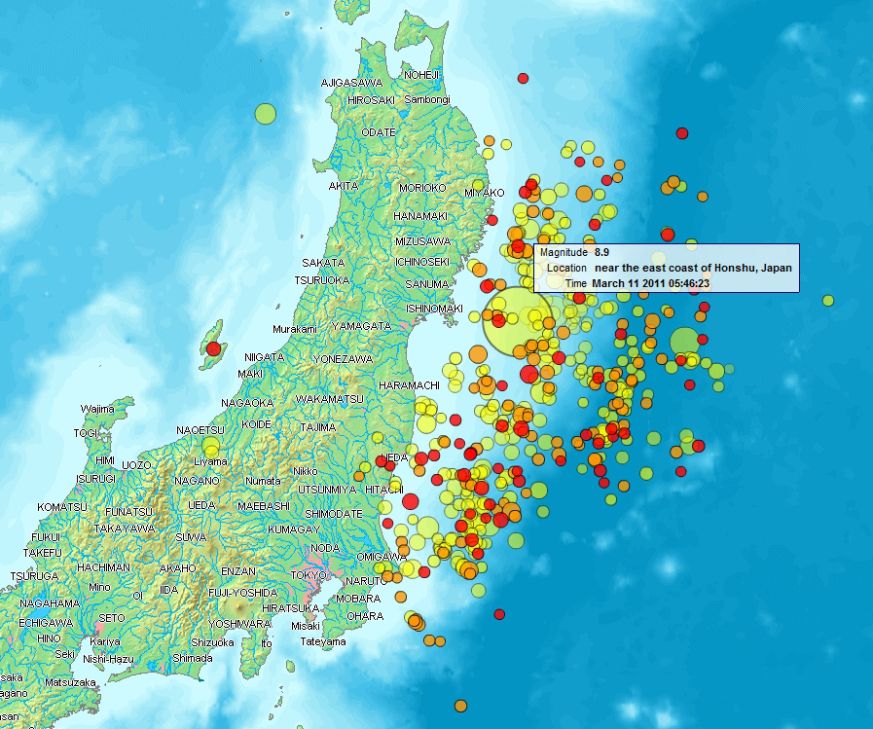 Magnitude 6.1 Earthquake Hits Off Japanese Coast, Along Pacific Ring of Fire. Wednesday's quake hit at 4:37 p.m. local time, or 8:37 a.m. PT, according to the U.S. Geological Survey. Its epicenter was about 200 miles off the coast of Japan, and about 315 miles northeast of Tokyo. The quake hit about 228 miles from Fukushima, the site of the nuclear power plant that was inundated following a tsunami triggered by a magnitude 9.1 earthquake on March 11, 2011. That much more powerful quake 6 1/2 years ago was much closer to shore.
Magnitude 6.1 Earthquake Hits Off Japanese Coast, Along Pacific Ring of Fire. Wednesday's quake hit at 4:37 p.m. local time, or 8:37 a.m. PT, according to the U.S. Geological Survey. Its epicenter was about 200 miles off the coast of Japan, and about 315 miles northeast of Tokyo. The quake hit about 228 miles from Fukushima, the site of the nuclear power plant that was inundated following a tsunami triggered by a magnitude 9.1 earthquake on March 11, 2011. That much more powerful quake 6 1/2 years ago was much closer to shore.On Tuesday, a magnitude 7.1 quake hit in the state of Puebla, Mexico, on the anniversary of a 1985 quake that killed some 9,500 in the same region. The death told climbed past 200 throughout the day, and rescue efforts were ongoing Wednesday. The Japanese quake Wednesday did not appear to cause any damage, but its location and size are a reminder of the volatile nature of the so-called Ring of Fire.
The 40,000-kilometer (25,000-mile) Pacific Ring of Fire stretches from the boundary of the Pacific Plate and the smaller plates such as the Philippine Sea plate to the Cocos and Nazca Plates that line the edge of the Pacific Ocean. About 80% of all earthquakes strike in the Ring of Fire, according to Hongfeng Yang, a seismologist at the Chinese University of Hong Kong.
People are most at risk in Chile, Japan, the U.S. West Coast, and other island nations including the Solomon Islands to the western seaboard of North and South Americas. They are at risk because they lie on subduction zones that are locked so tectonic energy must be released by large earthquakes. Related: What Does Mexico’s Earthquake Mean for California? A Caltech Seismologist Explains